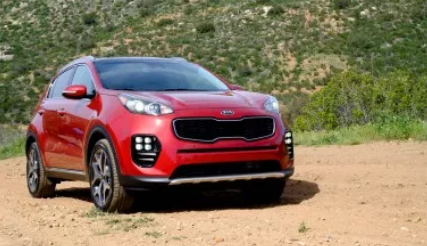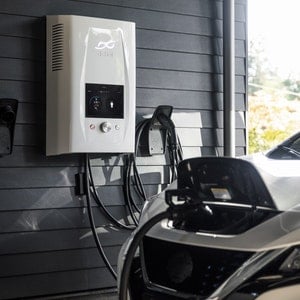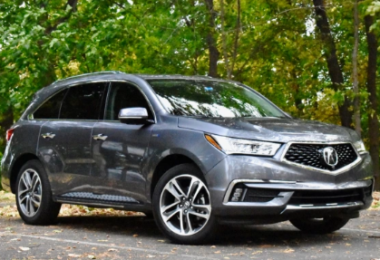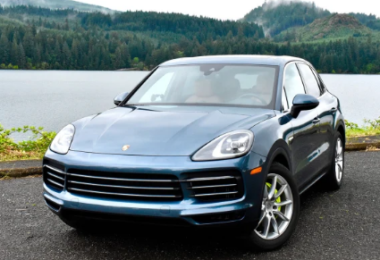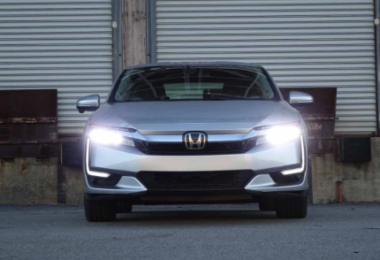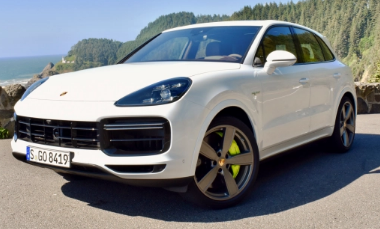I grew up watching Kia struggle with commitment issues worse than adolescence, at least when it comes to model names (remember the Sephia, Spectra, or Amanti?). The Sportage, which has been around since Haddaway asked us, “What is Love?,” is the center of Kia and the ideal representation of how far it has progressed.

When the Sportage was first introduced, it was a standard sport utility vehicle that was built on the same chassis as a Mazda van and didn’t distinguish itself from its Japanese rivals. Even the Sportage’s 2.0-liter four-cylinder engine was a Mazda creation. Isuzu and Suzuki are mere shells of what they once were, leaving only Kia as the lone amigo.
At the 2015 LA Auto Show, the most recent (fourth generation) Kia Sportage made its North American debut. With a new design that reminds me of a Porsche Macan, it is undoubtedly not a comparison I ever anticipated to make in my lifetime—and for less money, no less.
I took a plane to San Diego, California, to test drive two top-of-the-line Kia Sportage SX Turbo models that were available with front-wheel drive (FWD) and all-wheel drive (AWD). The Sportage SX Turbo has a starting price of $33,395 (£24,350 for the comparable GT-Line model and AU$47,992 for the Platinum trim), with AWD costing an additional $1,500.
The Sportage’s exterior features a cheerful face that has grown on me since it made its debut at the LA Auto Show. Kia’s signature tiger nose grille and ice cube LED driving lights are included despite the car’s aggressively joyful appearance, which resembles the grin of an evil genius.
For the illusion of off-road prowess, Kia gives the AWD cars a special front fascia that offers a greater approach angle of 28 degrees, as opposed to the 16.7 on FWD options. Although AWD models have a 0.4-inch more ground clearance, the breakover and departure angles are only slightly different.
With full LED taillights, a rear skid plate, and dual exhaust tips, the Sportage has its sexiest stance towards the back. The nicest aspect of the new design, in my opinion, is Kia’s sparse use of chrome.
The headlights and the strip in the middle of the taillights have a small amount of chrome detailing, while the remainder of the car’s brightwork is satin silver. I’m not great with chrome, and I’ve always felt it was a tacky approach to bling up an automobile.
Interior
When you step inside, you’ll discover a driver-focused interior made of premium materials. It is unique in this market class for the entire upper half of the dash to be made of a single form-fitting soft-touch piece. Unlike its rivals, Kia extends the soft-touch material all the way to the windshield instead of using a piece of hard plastic to do so.
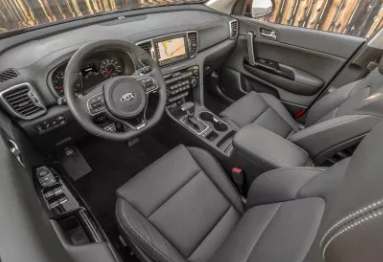
Hard plastic covers up anything below the infotainment display thanks to the texture and feel. With padding and a vinyl covering, the armrests are cozy to rest one’s elbows on.
I prefer Kia’s decision to continue with traditional physical buttons that click because each click represents a command. Like with capacitive touch buttons, there is no questioning whether you touched the button correctly or incorrectly. The usage of gloss black trim in the areas that are touched the most bothers me because it attracts smudges like crazy.
Kia did a fantastic job designing the Sportage’s interior. I was testing a RAV4 Hybrid Limited before to travelling to San Diego for the Sportage drive; nevertheless, the Sportage inside is years ahead of Toyota and could almost pass for a Lexus.
The sporty flat-bottom steering wheel with leather-wrapped thumb grips will make you feel like Speed Racer when you grab it. Analog instruments for the tachometer, coolant temperature sensor, speedometer, and fuel level are located in front of you.
Between the gauges is a 4.2-inch LCD screen that offers turn-by-turn directions, route details, driver assistance data, music information, and access to vehicle settings. Even while I adore technology, I still favor analog gauges for more basic tasks because they are straightforward and don’t suffer from visual latency like low-cost LCD cluster implementations.
Informational system
The Kia Sportage’s infotainment system is quite well-known and is essentially the same as the Hyundai Tucson’s system. Its user interface is also the same as that of the Kia Optima. The Tucson’s 8-inch, 800 x 480-pixel screen is used by Kia, but it is tilted towards the driver.
However, there is one significant distinction. While the Tucson’s Android Auto compatibility is still TBD, the Kia Sportage has it from the start. If you don’t want to rely on your phone, onboard navigation is provided along with simple, flat maps.
The ability to enter addresses and look up areas of interest while the car is driving is one feature of the Kia navigation system that I particularly like using with my passenger. Every time you start the automobile, a responsibility warning appears, but once it is moving, you are free to act anyway you like.
The Kia infotainment system is quite user-friendly and has a combination of on-screen and physical controls. The absence of a physical home button that launches the system’s split-home screen is my main complaint. Although there is a button on the screen in the upper left corner, tapping objects that are close to the edge of a recessed touchscreen is often the worst option.
Playback of music is possible by USB, Bluetooth, HD Radio, and SiriusXM. There is only one USB connector, but there is plenty of room for large phablets like my Nexus 6, which can fit in the nook above the shifter. The first six presets of SiriusXM playback include time-shifting, allowing you to repeatedly play Adele’s song Hello.
Kia puts a USB charging connection inside the center console in case you only required one to charge your phone. There is a USB charging port for the backseat passengers as well.
Apple CarPlay and Android Auto
Apple CarPlay and Android Auto are both supported by Kia in the Sportage, but only Android Auto is available at launch. It’s anticipated that a software update would add Apple CarPlay capability in April, but we’re still waiting for Kia to fulfill its promise for the Optima, so the wait may be prolonged.
But in the Sportage, Android Auto functions flawlessly. My Nexus 6 and my riding companion’s Samsung Galaxy S6 Edge Plus were used for my testing. The Nexus 6 was ready to use right away after being plugged in, but the S6 Edge Plus required some configuration adjustments before the Android Auto prompts appeared on the phone.
The Sportage’s Android Auto system is excellent since it enables you to use your phone and the car’s built-in infotainment system concurrently. While using the in-car navigation system and Android Auto, you can listen to music, and while using Google Maps and SiriusXM, you can listen to music. There is flawless interoperability.
Kia and Harman are still partners, and the Sportage now has a premium sound system with the Harman Kardon name. All SX Turbo trim levels come standard with the eight physical speakers and six-channel premium sound system. Although they share a channel with the front door speakers, the two tweeters are considered as separate speakers.
According to Harman, the system can produce up to 320 watts of power from an amplifier located in the trunk, which is respectable for a vehicle. The icing on the cake is Clari-Fi technology from Harman.
According to Clari-Fi technology, compressed music can regain lost musical information. Clari-Fi is a huge asset for SiriusXM, although I hardly ever experience quality problems with my high bitrate MP3s or Google Play Music membership.
It cleans up the sound to give what had previously sounded like a 1990s mixtape additional depth and warmth. So, if you listen to radio or subscribe to SiriusXM, Harman Kardon Clari-Fi technology greatly enhances sound quality.
The Sportage’s Harman Kardon-branded audio system is the greatest one available for a small CUV. It It is a pleasant system that outperforms the basic systems in the Hyundai Tucson and Honda CR-V and is a league above the Bose systems in the Mazda CX-5, Nissan Rogue, Chevrolet Equinox, and GMC Terrain. It has clear highs that don’t wear you out and snappy mid-bass.
Driving Aids
The Sportage from Kia has the same driving aids as the Tucson from Hyundai, including lane departure warning, automatic emergency braking, a backup camera, and downhill brake control (DBC).
The way everything operates is also unchanged. When a car enters your blind zone, the BSM system’s in-mirror indicator lights once. The flashing increases in speed to capture your attention and is accompanied by sound warnings if your turn signal is activated. For car detection, it has radar sensors positioned in the back bumper.
Every time you approach or depart a lane marker, LDW passively flashes an indicator in the gauge cluster and emits an auditory warning. Thankfully, Kia offers three distinct sensitivity levels that may be chosen in the car’s settings. A straightforward off button is likewise located to the left of the steering wheel.
didn’t have a chance to test AEB because I don’t intentionally try to activate it on public roads because, you know, life preservation and all that. But with a tap of the brake pedal, I was able to activate the Hyundai Elantra’s AEB system to irately flash a warning in the gauge cluster LCD display.
I believe the Sportage system functions similarly and equally effectively. A front-mounted radar sensor and a camera located above the rearview mirror are used by the LDW and AEB systems, thus some of the gear needed for adaptive cruise control (ACC) is already there. Even the Kia electronic parking brake has a great place to go below the shifter, along with full-speed ACC capabilities.
In contrast to rival CUVs from Mazda, Toyota, Honda, and Subaru, Kia does not offer ACC in the Sportage. The only direct response I received from Kia representatives was that ACC is theoretically feasible but is not provided.
DBC is a fantastic feature for descending steep, snow- and ice-covered terrain. Simply depress the button beneath the shifter and release the brake and throttle to activate it in the Kia Sportage. In San Diego, I couldn’t find any ice or snow (weird, right? ), but I did discover a steep dirt slope to try it out.
When DBC is activated, the brakes automatically apply to maintain a 5 mph speed in the vehicle. The car makes a lot of noises, but they are the anti-lock brakes (ABS) making their usual noises.
You can also check Acura ILX review and all the details about it

